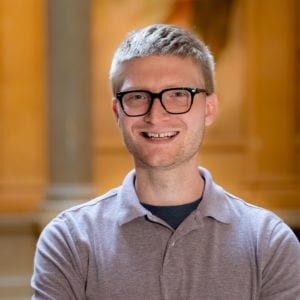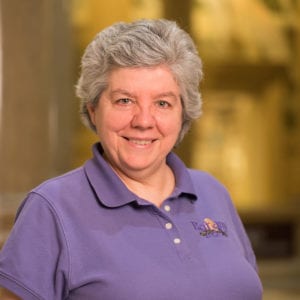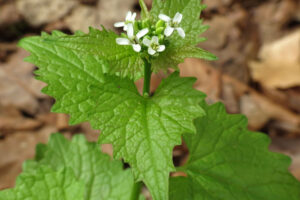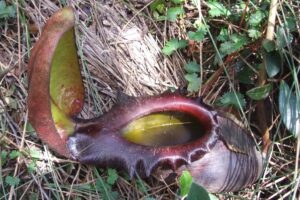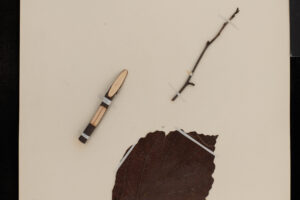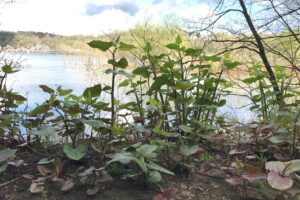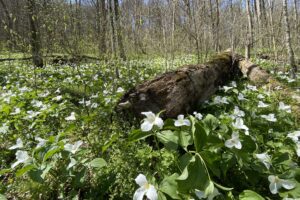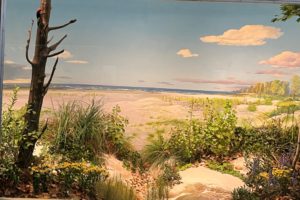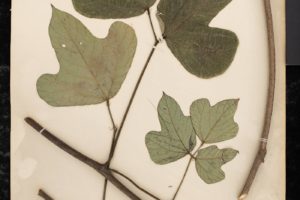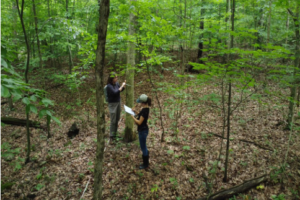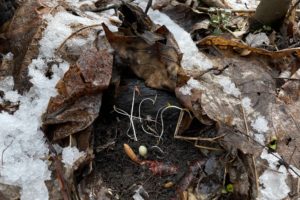
BOTANY AT CARNEGIE MUSEUM OF NATURAL HISTORY
The museum’s plant collection is the best in the world for western Pennsylania. Beyond the region, the greatest number of specimens are from the rest of North America (especially arctic Canada, southeastern United States, and western United States), followed by Latin America and Asia. Carnegie Museum of Natural History’s herbarium has approximately 3,000 type specimens, which represent about 0.6 % of the collection.
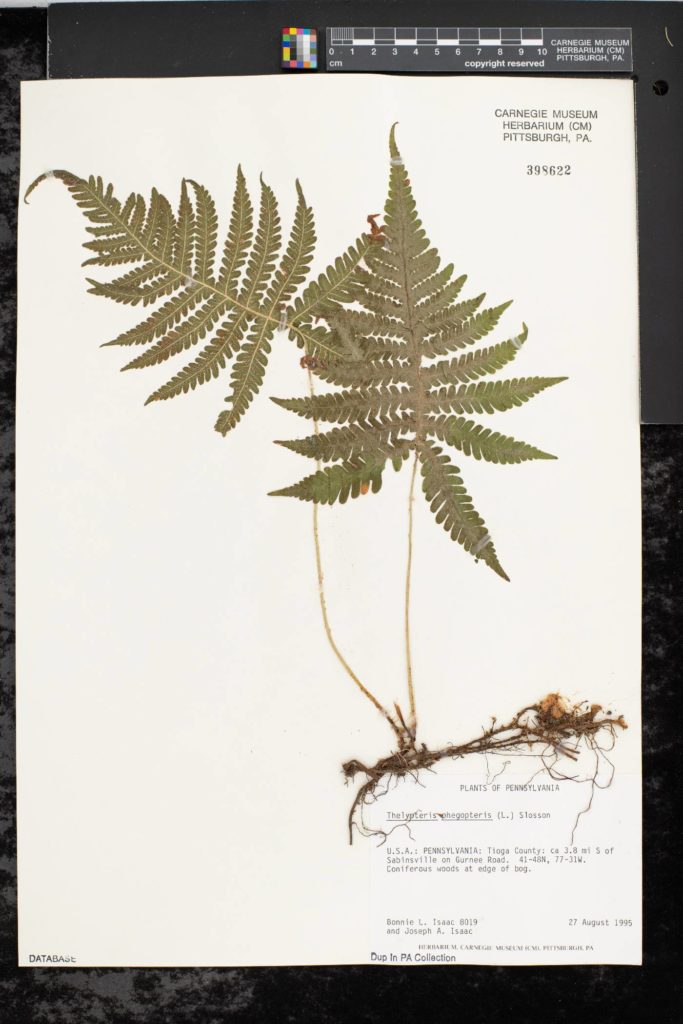
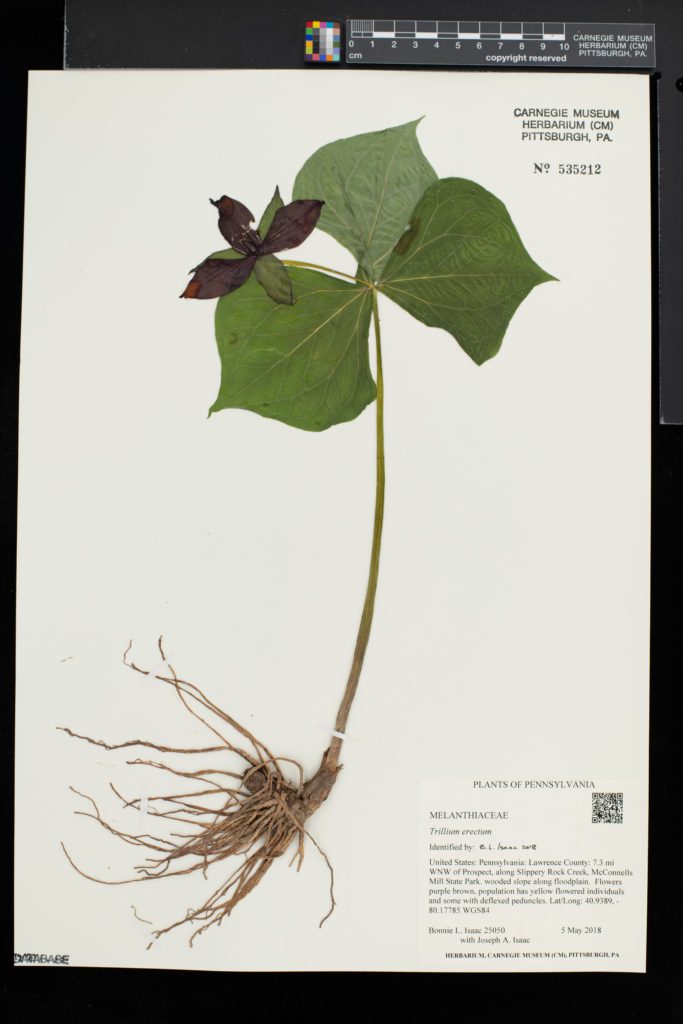
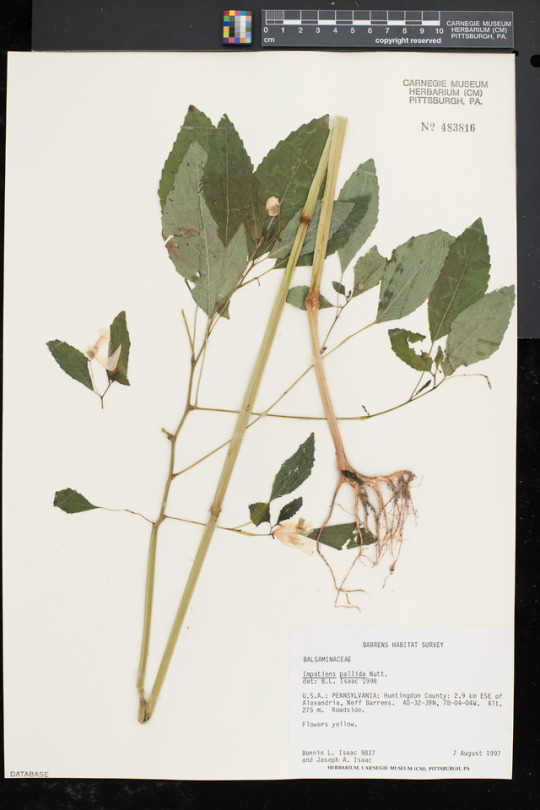
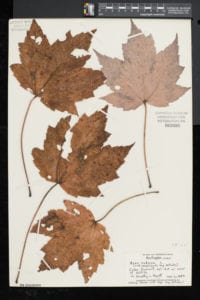
The Section of Botany Collection Highlights
- 490 “type” specimens—those specifically used to formally describe a species new to science. Type specimens serve as critical reference specimens for taxonomic studies.
- Type collections of special historical and scientific importance: C.G. Pringle (Mexico), H.H. Smith (Columbia); A.D.E. Elmer (Malaysia); E. Palmer (Mexico); M. Bang (Bolivia). Types of Crataegus (hawthorn) species from western Pennsylvania described by C.S. Sargent of Harvard University’s Arnold Arboretum.
- Herbarium of the Botanical Society of Western Pennsylvania, one of the oldest organizations of its kind (founded 1886) and still meets monthly at the museum. Their collection was donated to the museum, including some of the earliest specimens for western Pennsylvania.
- Jacob Wolle Herbarium from Jamaica (1837-1847) and eastern Pennsylvania (1827-1875). Wolle was the grandfather of the first director of Carnegie Museum, Rev. Dr. W.J. Holland.
- Specimens from the seminal two-volume work Wildflowers of Western Pennsylvania and the Upper Ohio Basin (1952), the culmination of a multi-year art/science collaboration between then Botany curator Otto E. Jennings and artist and then CMNH director Andrey Avinoff. Plants were collected across the region and rushed back to the to the museum by Jennings to be painted by Avinoff, who reportedly dropped everything to do so before plants wilted.
- F.M. Ownbey’s uniform-garden Allium (onion relatives) collections, which includes many cytovouchers and types.
- Hannibal and Tyreeca Davis herbarium, which contains 20,000 specimens with a concentration on Rubus(Rosaceae) including topotypes, material compared to types, type photographs, and life history specimens with floricanes, primocanes, and other growth stages.
- Selected monocot families from the Catholic University herbarium (LCU), notably Liliaceae.
- The herbarium of St. Vincent College (LAT) in Latrobe, PA has been integrated into CM.
- Extensive Arum family (Araceae) holdings, cited as an important New World collection.
- Monstruosités—an herbarium of French naturalist Michel Adanson, consisting of “odd” specimens collected from 1754-1796.
- Lily family (Liliaceae) ‘life-history’ specimens of F.H. Utech, representing life stages not well represented elsewhere.
- Isle of Pines (Isla de Juventud), Cuba collections made in the early 1900s by O.E. Jennings.
- Specimens from collected by E.H. Graham from Guyana for the Flora of the Kartabo Region (1934) and from Utah/Colorado for his Flora of the Uinta Basin (1937).
- Specimens collected by Sgt. D.C. Ralston during the Lady Franklin Bay Expedition (1881-1884), one of the earliest US explorations of the Canadian arctic.
Botany Collection Inquiries
Data from the herbarium specimens have been captured into an electronic relational database. Type specimen data and images can be found on JSTOR Global plants. The entire database is publicly available and searchable through the Mid-Atlantic Herbaria Consortium portal. High resolution specimen images are being added through the National Science Foundation-funded Mid-Atlantic Megalopolis Project.
Contact Collection Manager Bonnie Isaac for more information about the collection and protocols for section visits.
Botany Collection Visits
Visits must be arranged in advance. Carnegie Museum of Natural History policy stipulates that visitors are only allowed in the collection when a member of the curatorial staff is present. Normal working hours are Monday through Friday, 7:30 a.m.–4 p.m. Special arrangements may be made for consultation of specimens at other times for out-of-town visitors. To schedule a visit, contact the Collection Manager Bonnie Isaac.
Visitors who are not associated with another herbarium are not allowed free access to the main collection without explicit permission from curatorial staff. Specific material will be brought to such visitors. To facilitate use of the herbarium as an aid in identifying the local flora, a separate Pennsylvania Synoptic Collection is maintained in the Upper Herbarium and is available to all visitors.
All plant material must be frozen before being brought into the herbarium. Contact Collection Manager Bonnie Isaac for more information about protocols for section visits.
Loans
The section’s loan policy follows the suggestions outlined in The Herbarium Handbook (FORMAN, L. and D. BRIDSON. 1989. Royal Botanic Gardens, Kew).
- Loan requests are accepted only from institutions with appropriate facilities for storage of herbarium specimens. Such institutions must accept responsibility for the safe custody and return of the loan. Loans are not made to individuals. Use of material by graduate students must be made under the supervision of a major professor.
- Loan requests should be addressed to the collection manager and should include the name of the borrower as well as a short description of the intended project.
- Loans of herbarium specimens are made for a period of two years with the exception of type specimens that are available for a period of three months. Renewals may be requested in writing to the collection manager. Except for type specimens, loans should be returned when the borrower is finished with them, even if this means partial returns. Type specimens must be returned via registered first class mail. Specimens must be carefully packed to avoid damage in transit.
- All specimens are to be treated with utmost care, thereby conserving them for future studies.
- Herbarium sheets should be returned with the proper annotation label by the investigator. Each annotation should include the accepted name of the taxon, the name and affiliation of the investigator, the date of identification, and the citations of any resulting publication. These should be typed or printed in permanent ink (not ballpoint pen).
- Approval must be granted by the collection manager in order to remove any material from loaned mounted specimens. In addition, please note the following rules for any destructive sampling (see Forman and Bridson [1989] for additional recommendations on removal of samples from herbarium material). No material may be removed from type specimens or specimens of historical importance. Suitable loose material may be present in packets, avoiding the need to remove additional parts from a mounted specimen.
Pollen should be taken from no more than one flower per sheet, being extremely careful not to damage the flower. Follow Forman and Bridson (1989) for selecting anatomical, phytochemical, cytological, and seed samples.
An annotation label must reflect the portion of plant material removed, date of removal, investigator, institution, place of deposit of prepared slides, photos, and/or GenBank accession number. Duplicate slides or photos must be deposited with CM.
For DNA studies, the researcher must provide CM with location and storage method of any leftover sample. Storage facility must be permanent. Carnegie Museum of Natural History Herbarium reserves the right to request DNA or sequence material originally obtained from CM specimens. - Researchers are asked to send the collection manager PDFs of any publications which result from the study of borrowed specimens and to cite CM in their publication.
Meet the Researchers
Mason Heberling, Ph.D.
Associate Curator
Bonnie Isaac, M.S.
Collection Manager & Co-Chair of Collections
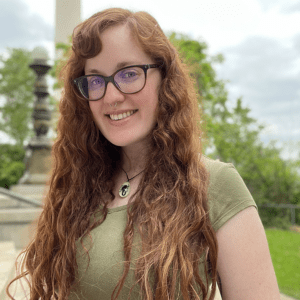
Alyssa Landa
Curatorial Assistant
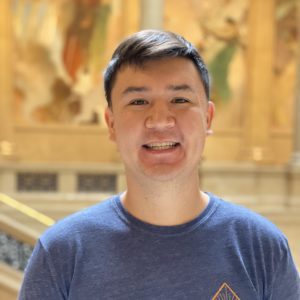
Ben R. Lee, Ph.D.
NSF Postdoctoral Research Fellow in Biology
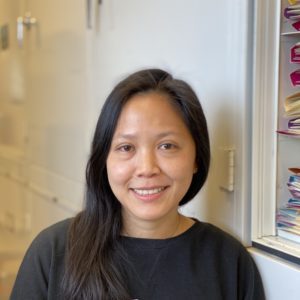
Molly Ng, Ph.D.
Rea Postdoctoral Fellow
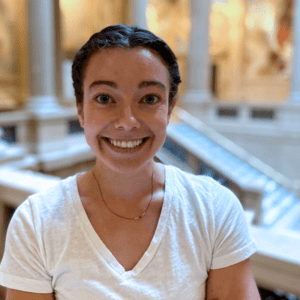
Rachel Reeb, Ph.D.
Postdoctoral Fellow
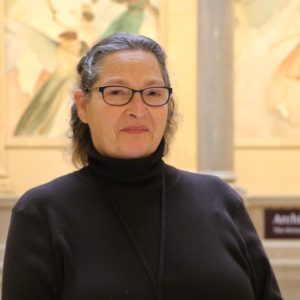
Cynthia Pagesh
Herbarium Assistant
Botany Blogs

City Nature Challenge: Noticing Invasive Plants
by Rachel Reeb and Jessica Romano This spring, thousands of people will join the City Nature Challenge, a global effort to document …
Scientific Names Matter in March Mammal Madness
by Erin Southerland March Mammal Madness (MMM) bracket advice: look up the scientific names of species on the MMM website before you …
Collected On This Day: Witch Hazel, January 1923
by Mason Heberling This specimen of common witch hazel (Hamamelis virginiana) was collected in January 1923 in Beaver County, Pennsylvania “East of …
What’s in a Name? Japanese Knotweed or Itadori
by Rachel Reeb We name what we notice, adopting or creating vocabulary to reflect all that our senses regularly engage. Where multiple …
Collected On This Day: White Trillium from May 28, 1993
by Mason Heberling Spring flowers fade, but some leaves hang on This specimen of white trillium (Trillium grandiflorum) was collected by Fred …
A Bit of Presque Isle, Erie, PA in the Hall of Botany
by Patrick McShea Presque Isle State Park is the most visited component of Pennsylvania’s 121 park system. In recent years, the beaches, …
The Vine That Ate Pittsburgh? Not yet.
by Mason Heberling This specimen of Kudzu (Pueraria montana var. lobata) was collected on October 28, 1920 by Neil McCallum at West End Park, …
An Intern’s Experience Studying the Ecosystem at Powdermill
by Rachel Lloyd This summer I was an intern at Powdermill Nature Reserve, Carnegie Museum of Natural History’s environmental field research station. …
Exploring the Role of Leaf Litter In Our Forests
by Abby Yancy Leaf litter is the dead plant material that has fallen from trees, shrubs, and other plants. It hangs around …
Botany Activity Sheets
Section of Botany Collection Featured in Museum Displays
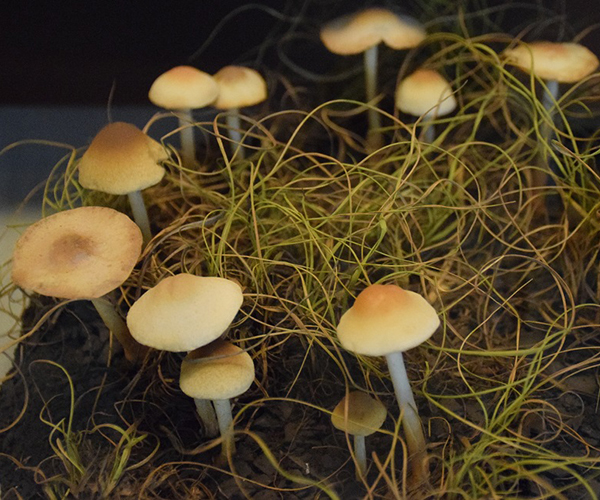
The museum’s historic Botany Hall investigates the incredible diversity of plant life. The hall emphasizes four different biomes found in the continental United States—a Florida Everglades wetland, a Mount Rainier alpine meadow, an Arizona desert, and a Pennsylvania valley. All illustrate how varying conditions of temperature and water affect plant life. The displays allow for an in-depth look at the world of plants, recreating habitats from around the world.
